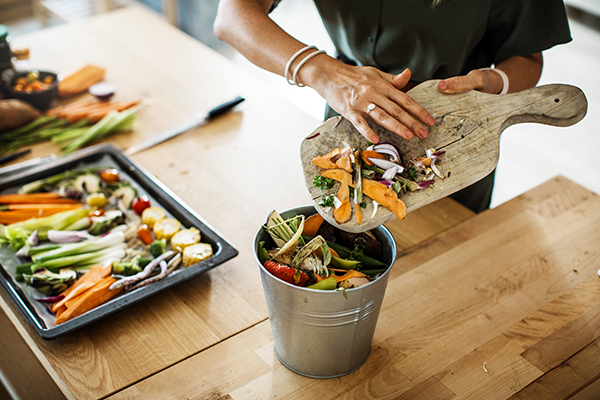[ad_1]
What’s “sustainability”? Basically, it’s a producer and shopper’s model of a doctor’s Hippocratic Oath: First, do no hurt — on this case, to the atmosphere.
Far more than a buzzword, it’s an ethos you may actively apply to your on a regular basis life by way of:
- the groceries you purchase
- the eating places you patronize
- the companies you help
- the merchandise you utilize
Right here’s a glossary of a number of the most vital sustainability phrases, beginning with the idea itself.
What Is Sustainability?
“Sustainable agriculture practices have the power to extend meals manufacturing with out rising environmental degradation,” explains Dana Ellis Hunnes, Ph.D., M.P.H., R.D., a senior dietitian at RR-UCLA Medical Heart and creator of the upcoming e-book Recipe for Survival: What You Can Do to Stay a More healthy and Extra Environmentally Pleasant Life (Cambridge College Press).
Amongst different issues, sustainable farmers work to enhance the soil — decreasing erosion and bettering its capacity to retailer water and vitamins — through the use of natural and regenerative farming methods, resembling composting.
“Meals are thought-about to be sustainable when rising them may be finished with out compromising financial, ecological, or socio-political wants,” says Hunnes.
That ethos applies to the producers and producers of different merchandise as properly.
Professional tip: Read more about Beachbody’s dedication to sustainability, fair-trade practices, and high quality within the manufacturing of Shakeology.
1. Carbon footprint
In line with the Center for Sustainable Systems at the University of Michigan, a carbon footprint is the entire greenhouse fuel emissions triggered instantly and not directly by a person, group, occasion, or product.
Meals accounts for 10% to 30% of a family’s whole carbon footprint, 68% of that from meals manufacturing and 5% from transportation.
Meat has a a lot greater carbon footprint than plant merchandise.
2. Composting
“Composting is a pure strategy of rotting or decomposition of natural matter,” says Hunnes.
Crop residues, animal waste, meals discards, and different fibrous supplies (resembling paper) are gathered and allowed to decompose, then used as fertilizer for brand spanking new crops.
“This will increase the uptake of wholesome vitamins — resembling nutritional vitamins, minerals, and different bioactive compounds — into crops themselves, and reduces or eliminates the necessity for inorganic fertilizers, pesticides, and herbicides,” she explains.
3. Truthful-Commerce
That is each a social and environmental side of sustainability, aimed toward serving to farmers and producers in growing nations.
“The essential tenet of fair-trade is that it helps accountable corporations, empowers farmers, employees, and fishermen, and protects the atmosphere by paying employees a good value for the product and the work they do, whatever the volatility in market costs,” says Hunnes. “Truthful-trade producers have a tendency to interact in environmental stewardship, prohibiting the usage of dangerous chemical compounds and taking measures to guard and regenerate pure sources.”
4. Inexperienced merchandise
The definition of a inexperienced product is kind of diffuse and murky. (This permits greenwashing; see under.)
After finding out a spread of interpretations of the time period, researchers writing in a 2019 issue of Journal of Financial Surveys proposed this overarching definition: “A product (tangible or intangible) that minimizes its environmental impression (direct and oblique) throughout its complete life cycle, topic to the current technological and scientific standing.”
5. Greenwashing
When a producer takes benefit of the ambiguous definition of “inexperienced merchandise” to cross their product off as environmentally accountable when it actually isn’t.
6. Regionally grown
“Native meals markets sometimes contain smaller farms that develop or elevate a wide range of merchandise and have brief provide chains,” says Hunnes. “Farmers typically carry out all of their very own advertising and marketing capabilities together with the storage, packaging, transportation, distribution, and promoting of their merchandise.”
The advantages of native meals programs embrace enhancing employment and earnings inside their communities and decreasing the quantity of vitality required and greenhouse gases emitted to move merchandise from farm to market.
7. Locavore, or Localvore
Somebody who eats solely regionally grown meals.
8. Natural
“Natural farming prohibits the usage of artificial fertilizers and pesticides, requires certification our bodies to certify producers based mostly on a set of manufacturing requirements,” says Hunnes. “(It) tends to rely extra on wholesome dwelling programs, benefiting from organic variety and the recycling of vitamins.”
9. Regenerative Farming
A step past sustainable farming, regenerative farming goals to provide meals with the least quantity of hurt to ecosystems, animals, or people. It’s typically natural or practically natural.
“Regenerative farming is proposed as an answer to the environmental ills of standard farming by decreasing, if not eliminating fully,” says Hunnes. “The usage of phosphorous- and nitrogen-rich fertilizers and different poisonous chemical compounds, that are dangerous to the atmosphere and well being.”
10. Renewable Power
In line with the National Resources Defense Council (NRDC), renewable vitality, sometimes called clean energy, “comes from pure sources or processes which can be continuously replenished.” For instance, the solar and the wind.
[ad_2]
Source link






